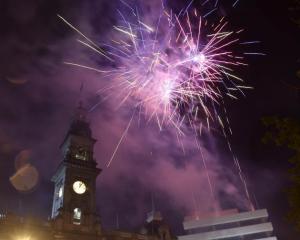What a thrill; nine New Zealand sites have been named among the 500 must-see places in the world, according to travel guide publisher Lonely Planet.
Lonely Planet says its ''Ultimate Travelist'' is the first of its kind, being compiled by whittling down the sights featured in its popular guidebooks.
It includes historical sites, scenic locations as well as museums/galleries and ranks the chosen 500 (what it calls ''the world's best mega-sights and hidden gems ... the most thrilling, memorable, downright interesting places on this planet'') in order of ''brilliance''.
The 1000-plus temples, shrines and tombs of Angkor in the jungles of northern Cambodia (described as the ''Hindu heaven on Earth'') were deemed the ultimate visitor destination.
There can be little surprise regarding the other top-10 sites: the Great Barrier Reef (Australia), Machu Picchu (Peru), the Great Wall of China, the Taj Mahal (India), the Grand Canyon National Park (US), the Colosseum (Italy), Iguazu Falls (Brazil-Argentina), Alhambra (Spain) and Aya Sofya (Turkey).
It is no small source of local and national pride to discover one of our southern gems named in the top 20.
Fiordland National Park makes the list at No 17, after Fez Medina (Morocco), the Twelve Apostles (Australia), Petra (Jordan), Tikal (Guatemala), the British Museum (England) and Sagrada Familia (Spain) and ahead of Santorini (Greece), the Galapagos Islands (Ecuador) and the Museum of Old and New Art (Australia).
Abel Tasman National Park comes in at No 35, then more southern scenic sites - the Franz Josef and Fox Glaciers, and Lake Wanaka - make the top 100, at 81 and 94 respectively. Stewart Island is ranked 125th.
Other New Zealand gems to make the ultimate list are the Bay of Islands (130), Whakarewarewa (276), the Waitomo Caves (280) and Te Papa Tongarewa.
The New Zealand inclusions confirm what we already know.
Whether it's our top surf breaks, tranquil lakes, braided rivers and sparsely populated beaches, or our majestic mountains, primeval bush or stunning night skies, our greatest asset is our scenery, and our land and seascapes provide one of the best playgrounds in the world - for ourselves and visitors alike.
We have already marketed ourselves successfully to the world.
The 100% Pure New Zealand international advertising campaign built on our clean, green, unspoilt image, the global success of the Lord of the Rings and Hobbit movies has seen us become the new home of Middle-earth, and our innovative approach and inspirational Kiwi attitude have helped us become an adventure tourism destination.
In fact, our success is such that tourism is rapidly on track to overtake dairying as our biggest export earner.
International tourists number almost $3million a year and bring in more than $10billion - 15% of our total exports.
Domestic and international tourism combined is worth almost $24billion.
Given that Lonely Planet is widely viewed as the world's leading travel authority, the listings have the potential to further increase tourism.
The ultimate individual ''bucket list'' could translate into economic gold for the regions involved.
The opportunities abound: for jobs in accommodation and hospitality, and for people with language and cultural skills given the growing Chinese visitor demographic.
But there is no escaping the challenges ahead.
Providing affordable accommodation for tourism industry workers in the likes of Auckland or Queenstown is already near-impossible.
Suitable visitor accommodation is also often problematic, particularly at peak times.
There are other infrastructure issues, including around roads and transport.
Airports, airlines and tourist groups fear the Government's new border tax may keep international visitors away, but there are those who argue further tourist taxes are required - for the likes of national parks.
The overarching challenge will be finding the balance between the economy and the environment.
While tourism is bouncing back after the global financial crisis, the lessons of the past and present must inform decision-making for future sustainable development, lest boom times leave a long-term blight on the landscape, our most important asset.











